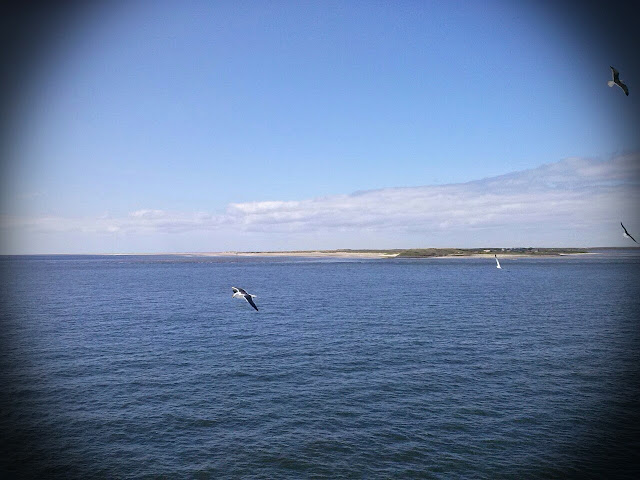Our first "mooring day" of the cruise actually started yesterday
evening, when, during a spectacular sunsets, the three final
positions and depths for the three lines of moored instruments have
been eventually decided. The plan is to anchor them at the sea bottom,
at about 2300 m depth, and let them in the water measuring for about
one year.
On each line, different instruments are attached at different depths,
to be able to capture as accurately as possible the spatial and
temporal variability of the physical properties of the water column
(temperature, salinity, turbidity) and of the current velocity field
in the area.
Today we have deployed two of these moored instrument lines, each of
those was 1400 m long, in two locations downstream of the source of
our plume, the Rainbow vent field.
According to previous studies and to our intense CTD survey from last
week, we decided for two locations north east of Rainbow, one close to
the vents (about 2 miles far away from the source) and one where the
plume should be more disperse (about 5 miles far away from the
source). Tomorrow, the third line of instruments will be moored
upstream of the plume source, in a south-southwest direction, in order
to understand the properties of the currents before interacting with
the vent area.
The deployment of a mooring is a very delicate phase of the cruise,
requiring the technicians a lot of man power and concentration, and
requiring the scientists a lot of patience, since they will have to
wait till the end of those 1400 m to know if the line is actually
anchored where they wanted.
And those 1400 m of cables are even slower when the length counter is broken!
Fortunately, stopwatch can do miracles, and eventually all the
instruments are attached at the required depths. At last the final
heavy weight (the actual anchor) can be released with a big splash in
the water. Gravity will then bring the whole line down to the bottom,
and keep it in place until we will be back, next year.
It is actually a strange feeling to know that a 1400 m long line is
standing straight up from the bottom of the ocean, however, even if a
ship will pass on top of it, there will be still 1000 m between the
top buoy of the instrument line and the sea surface, so no problem if
you will be sailing across the Atlantic this Summer!
The first mooring line went down in the abyss around 11, supervised by
a group of dolphins, curios about who and what was disturbing the flat
surface of the Ocean.
The second one went down around 15.30, when still perfect weather
conditions were helping the operations.
In this second line, a very special instrument has been mounted: a
moving device that will measure temperature, salinity and turbidity
while moving up and down the line for 1000 meters every 8 hours, for
the next 5 months. This will provide unique information on the
temporal variability of the plume intensity and water properties, over
the tidal cycle but also over a longer time scale.
After the deployment of the second mooring, it is time to be back to
the usual "down to bottom-up to surface" measurements: it is the time
of the so-called large volume sampling, that will collect 1 cubic
meter (a lot!) of water from the bottom of the ocean, and hopefully
catch unlucky larvae that found themselves in the wrong place in the
wrong moment.
